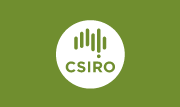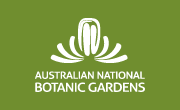Using the Curation Table
General
The Curation Table records information about the storage and processing of the preserved collections of the Australian National Herbarium, including:
- the placement of genera in families
- the location of specimens in the herbarium
- cross-referenced synonyms of families and genera
- curatorial staff responsible for particular groups
- the states of integration of the two legacy collections
- progress in specimen processing and identification
- indicative dates when actions were completed in the collection
- references of botanical treatments relevant to the collection
- comments about the curation of the collection
It is manually maintained as a reference or summary of work that is underway or completed and is not an automatic compilation from the herbarium or other databases.
The Curation Table is a record of the physical storage of specimens within the herbarium and may not necessarily reflect current views of classification or taxonomic arrangement. For practical reasons there may be delays in new taxonomic arrangements recorded in APNI plant name and ANHSIR herbarium specimen database being taken up in the placement of specimens in the herbarium.
Taxon Information
The basic recording level is the genus. Summary entries are included for each family. These can be retrieved by entering a query with an asterisk '*' in the Genus field. The following taxonomic information is associated with each genus entry:
- Group - the broad taxonomic group
- CA - Algae
- CX - Slime Moulds
- CF - Fungi
- CC - Hornworts
- CL - Lichens
- CH - Hepatics
- CM - Mosses
- CP - Pteridophytes
- PG - Gymnosperms
- PD - Dicotyledons
- PM - Monocotyledons
- Order - the taxonomic order to which the family belongs
- Family - the taxonomic family to which the genus belongs
- Family number - the family number used in the Australian National Herbarium
- Subfamily/Tribe - a subfamily or tribe to which a genus may belong.
- Genus - the genus, or basic unit of curatorial management
- Accepted name - the currently accepted name if the genus (or family) is considered a synonym
Flags
The database uses a number of flags to show the status of many of the actions and associated information. For the most part these are 'yes' and 'no' or selectable checkboxes or radio buttons reflecting 'yes' or 'no'.
- Y - Yes, all specimens completed
- N - No, not done at all
- P - Partly done, not all specimens completed
- A - Australian specimens only completed
- Z - no specimens in the collection
- ( - ) - a null flag to indicate synonym entries
The main flags in The Curation Table cover:
- Literature: literature relevant to this taxon has been received
- Nomenclature: APNI has been updated with new names and synonymy
- Database: Specimens have been entered in ANHSIR
- Curation: Identifications on the specimens have been updated
Distribution and occurrence flags
A number of check boxes and buttons have be provided to indicate the occurrence of representatives of the genus or family in Australia. Distribution and occurrence flags include:
- Native - genus has representives native to Australia
- Exotic - all represenatives of genus are not native to Australia
- In Aust. - genus is represented in the Australian flora
- Introduced - all representatives of an exotic genus are introduced in the Australian flora
- Naturalized - all representatives of an introduced genus are naturalized in the Australian flora.
Other fields and flags
A number of other fields indicate other information about the selected genus:
- Curating Staff - initials of staff member responsible for taxon
- Bldg, Floor, Unit Number - location of family in the herbarium
- Rotap flag - Whether ROTAP specimens marked
- References - relevant taxonomic references for the genus
- Mount exchange - Whether incoming exchange should be mounted
- Backlog mounted - Whether the backlog has been mounted
- Partial databasing flags - state of databasing on legacy databases
- Comments - General comments about the genus or its curation
- Metadata - details of record creation and update
Feedback on this service and database gateway is appreciated.
Please contact the:
database managers - for matters of data structure and content
webmaster - for matters internet and html
![An Australian Government Initiative [logo]](/images/austgovt_canbr_90px.gif)




